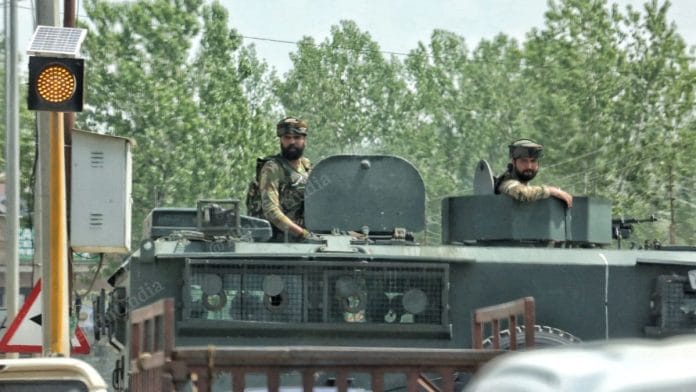New Delhi: The foreign press extensively covered Tuesday’s terrorist attack that killed 26 and injured several others in Pahalgam’s Baisaran, with the Pakistani, Chinese and the United States media delving into what is being called one of the deadliest terrorist attacks in Kashmir Valley.
Pakistan covered the Pahalgam terror attack through reactions from its officials and a look into Kashmir’s socio-political climate.
The same report says that former federal minister Khawaja Saad Rafique called the Indian media’s attempt to blame Pakistan “highly irresponsible, absurd and baseless”.
The attack has not escaped the attention of the Chinese either.
In a statement, Chinese foreign ministry spokesperson Guo Jiakun expressed opposition to “all forms of terrorism”, reports Global Times.
“We resolutely oppose all forms of terrorism, extend our condolences to the victims, and express sincere sympathy to the bereaved families and the injured,” he said, the report adds.
The Global Times also reports on Prime Minister Narendra Modi’s return to New Delhi after the Pahalgam terror attack, cutting short his diplomatic visit to Saudi Arabia.
Blow to Modi govt claims, say Western outlets
Western outlets reported on the Pahalgam terror attack as a blot on the image of the Union Territory (UT) of Jammu and Kashmir, as curated by the Indian government since the abrogation of Article 370 in 2019.
The deadly terror attack on India’s “mini-Switzerland” comes as a “blow to the Indian government’s claims of having stabilised Kashmir”, writes The Economist in Essential India, the magazine’s weekly newsletter.
The abrogation “allowed tens of thousands of outsiders to get jobs and buy land in the region”, and “tourist numbers increased”, but also caused “a deterioration of ties with Pakistan”, The Economist further writes.
The British magazine was referring to Pakistan Army Chief Asim Munir’s recent speech, where he referred to the contested Kashmir Valley as “our [Pakistan’s] jugular vein.”
The Guardian’s Aakash Hassan and Peter Beaumont also weigh in on the Pahalgam terror attack, calling it “a major shift in the regional conflict”. For the “last many years, tourists have largely been spared from violence despite a spate of targeted killings of Hindus”, they say.
The British daily mentions that Kashmir continues to be one of the world’s most militarised zones and that both India and Pakistan stake claim to the region, in its entirety, despite having jurisdiction over different parts.
On the other hand, The New York Times reports on survivor testimonies.
Gunmen suddenly opened fire, shooting “indiscriminately” from behind the bushes, reports Anupreeta Das, Suhasini Raj, and Showkat Nanda in The New York Times.
“The Indian government has ruled Kashmir with a heavy hand, keeping order with a huge security presence and for years suspending democracy in the region,” says the report.
However, the domestic tourism industry has benefited due to Modi’s need to project an image of stability in the UT, it adds.
The American newspaper describes the site of violence as the entry into the previously Baisaran Valley, rather romantically. “The 20-minute hike through brush opens onto lush green meadows that are often carpeted by flowers in the summer, making it a big tourist draw,” its report says.
The NYT also reports that the attack comes amid US Vice President JD Vance’s first-ever official visit to India for a four-day tour.
Other foreign outlets focus heavily on the Kashmir contradiction—the valley’s enormous tourist potential and its heavy militarisation, history of violence, and decades of strife.
In 2023, The Wall Street Journal reported from a global conference in Srinagar, aimed at demonstrating the UT’s new avatar. However, not every sector appeared to be thriving, the WSJ, at the time, wrote.
“Some sectors like manufacturing have struggled in a region that suffers from frequent power outages and lack of connectivity with the rest of India. The only major highway has seen periodic shutdowns during bad weather or political protests, both before and after the government’s 2019 move, choking off the flow of goods,” the report said.
The American magazine had also said local business owners were wary, still “bracing for future turmoil”, and that only heavy militarisation had kept the bitterness and discontent against the government in check.
(Edited by Madhurita Goswami)






